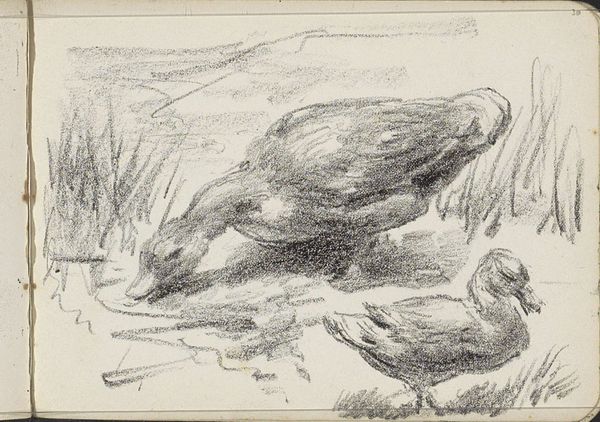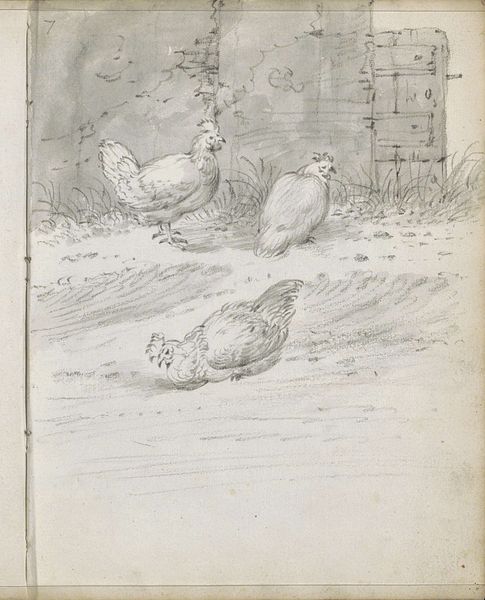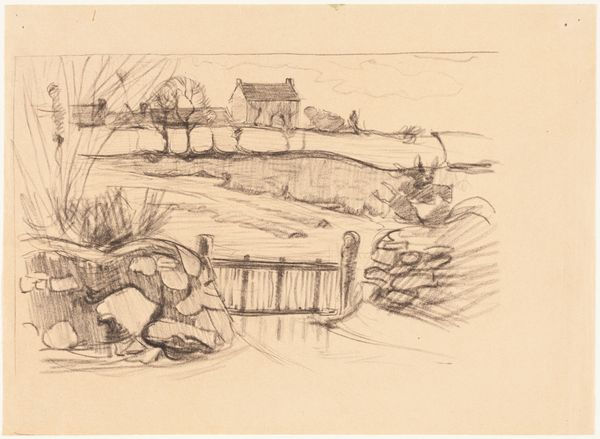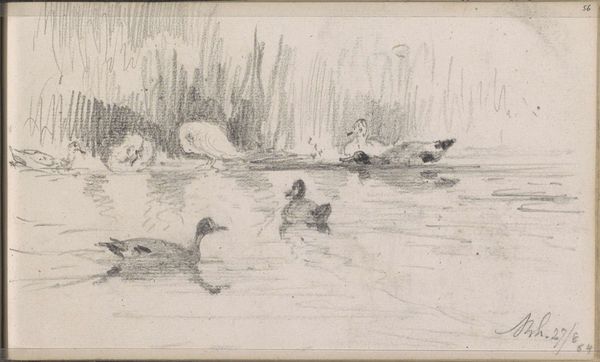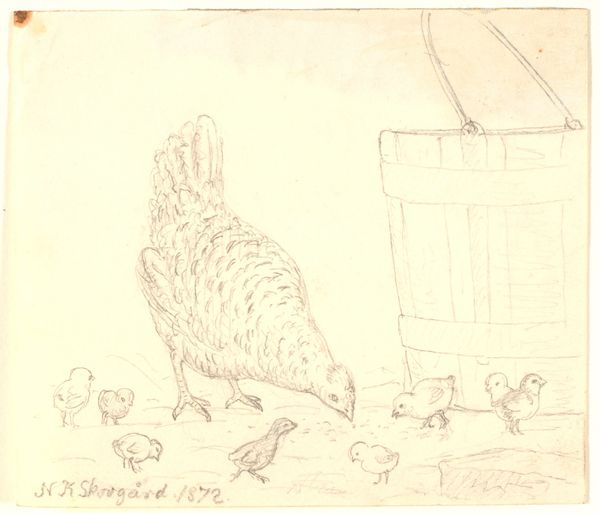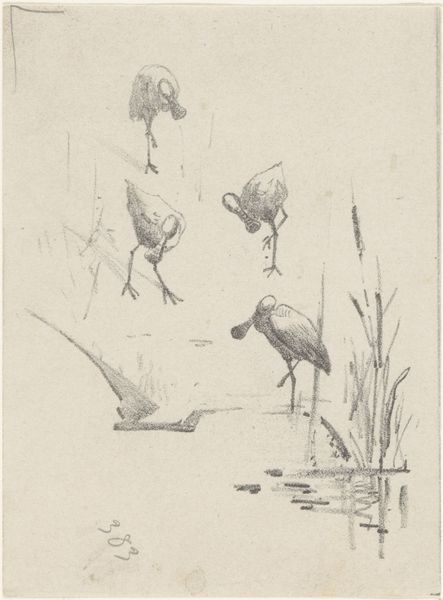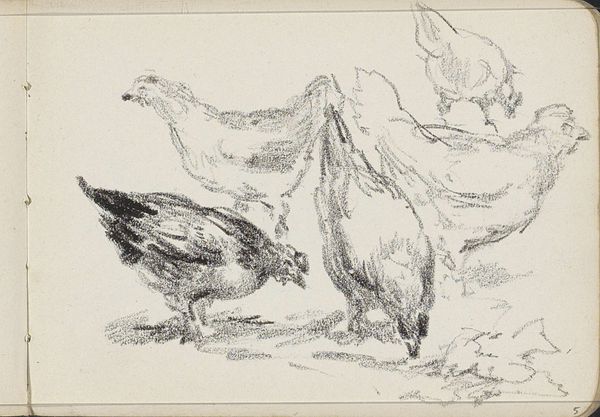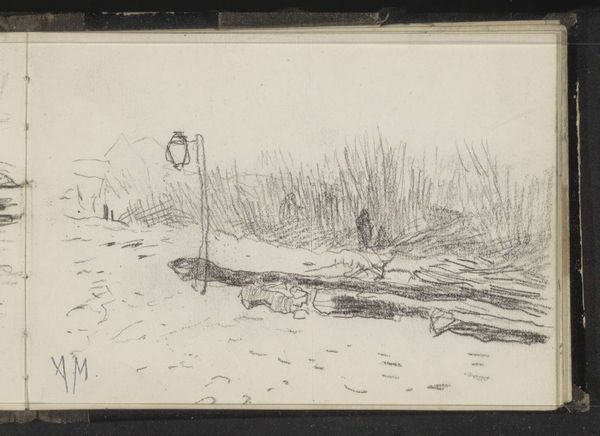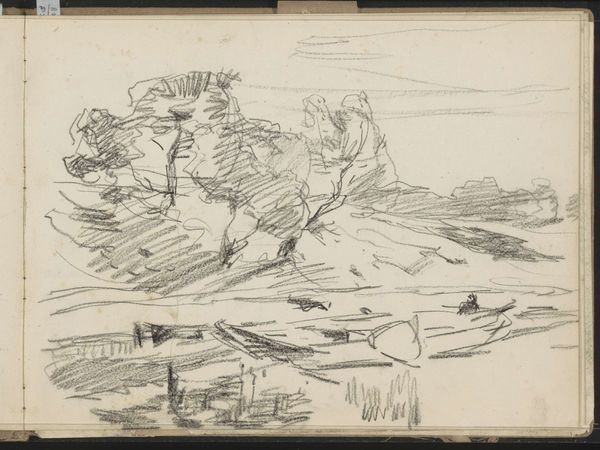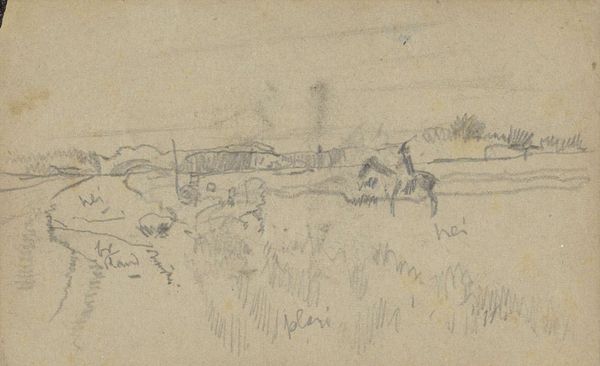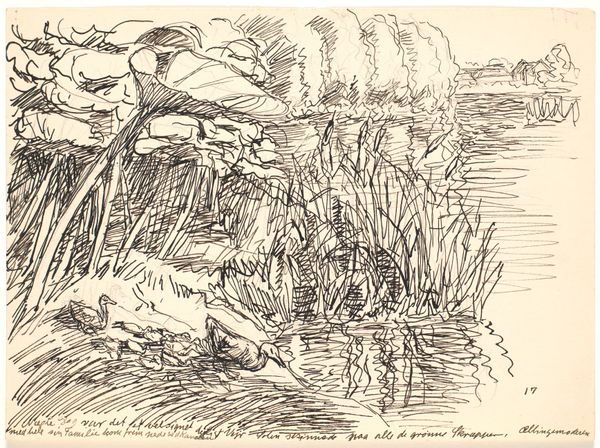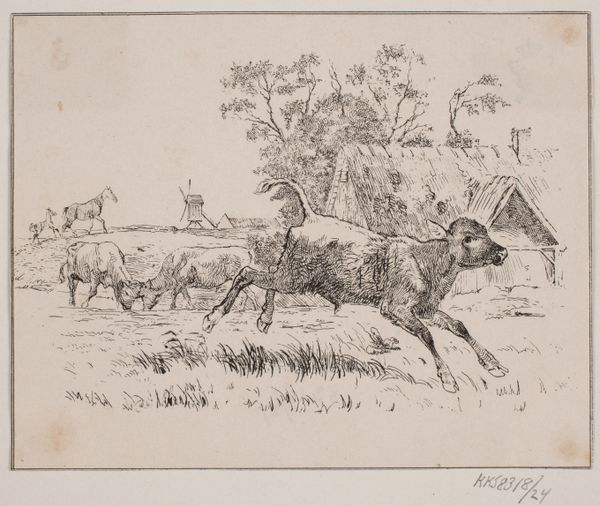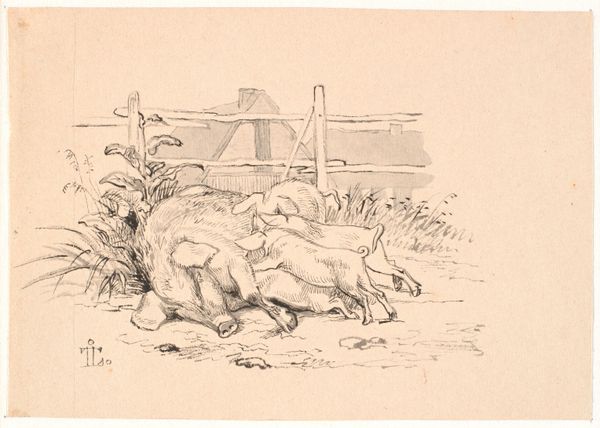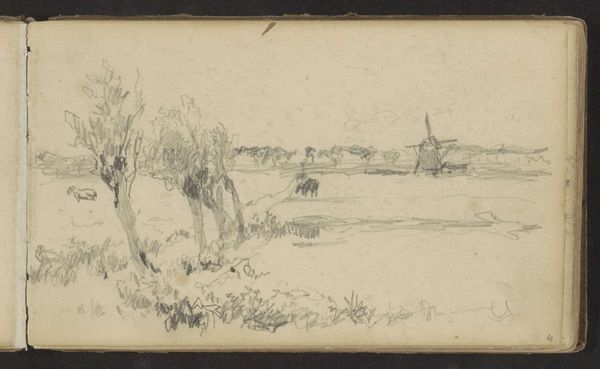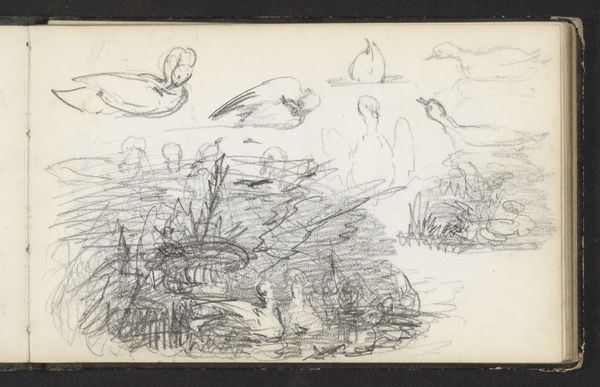
drawing, paper, ink
#
drawing
#
landscape
#
paper
#
ink
#
line
#
genre-painting
Dimensions: height 187 mm, width 252 mm
Copyright: Rijks Museum: Open Domain
Curator: Let's discuss this charming ink drawing, "Hen and Chicks in a Walled Field," created by Felix Hess sometime between 1888 and 1943. It’s rendered on paper. What strikes you initially? Editor: It has a breezy, pastoral quality, almost like a quick sketch from life. I'm immediately drawn to the dynamism—the hen in mid-stride, the chicks scurrying after her. It feels very spontaneous. Curator: Hess captures a common scene from agrarian life; however, it reflects not just bucolic scenery. Consider the wall in the backdrop. It is not just part of the landscape, but speaks of enclosure, ownership and maybe restricted freedom. Does that influence how you perceive it now? Editor: Absolutely. Framing the subject like this offers a perspective shift—prompting thought around ownership, restriction and perhaps issues around natural vs. cultivated. Also, given the timeframe, these images take on a particular resonance. Where might the wall protect, but also confine? Curator: Precisely. The artistic license elevates this above just being illustrative, right? The artist prompts us to view domestic space beyond a simple depiction, hinting at both security and perhaps lost freedom. The seemingly natural backdrop in a drawing turns political, in that sense. Editor: It is important to examine it from this point, and it is something so many casual onlookers will miss without a guiding perspective. In a way, this domestic sphere contrasts sharply against ideas around power, safety, and, quite pointedly, the subjugation within those lines. What the artist perhaps is doing is using such imagery of familiar harmony and disturbing it with the underlying context of restricted agency? Curator: I think your take brings us to see the nuances. The simple subject matter in art sometimes offers a great narrative for the social constructs, challenging the viewers. It transforms a commonplace scenario into something far more profound. Editor: Exactly, the everyday now seems a layered commentary about historical narrative, questioning domestic liberty. So next time someone might chance a look at this, they are bound to see so much beyond mere animal imagery.
Comments
No comments
Be the first to comment and join the conversation on the ultimate creative platform.
